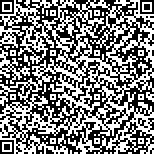| 摘要: |
|
| 关键词: |
| DOI: |
| Received:January 11, 2012Revised:August 17, 2012 |
| 基金项目:This work was supported by the National Natural Science Foundation of China (No. 61074004), the Program for New Century Excellent Talents in University (No. NCET-09-0674), and the Research Fund for the Doctoral Program of Higher Education (No. 20110121110017). |
|
| An analysis on the airship dynamic model linearization |
| Xianwu LIN,Weiyao LAN |
| (Department of Automation, School of Information Science and Technology, Xiamen University) |
| Abstract: |
| The existing results on airship dynamic model linearization are usually achieved under the assumption that the airship trim state has a linear velocity with nonzero axial and normal components. This means that the direction of airship velocity is not coincident with the axis in the trim state and the deflection angles of the air rudders are different from their attack angles. However, these differences are not explicitly distinguished when calculating the air rudders’ aerodynamic force. In this paper, to build a more accurate airship dynamic model, aerodynamic forces and moments produced by the air rudders are deduced for the case that the direction of airship velocity is not coincident with the trim axis. A special trim state that all linear and angular velocities are zeros except axial and normal linear velocity, adopted by most research on airship dynamic model linearization, is selected to linearize the six degree airship dynamic model for simplicity and for comparison. Both the control forces of the propelling system and the air rudders are linearized to achieve more control inputs for the linear model. The extra control inputs provided by the propelling system can be used to stabilize the airship when the air rudders are invalid due to low speed of the airship or the constraint of air rudder mechanical strength. The nuance between the new linearized model and those deduced in the literature is discussed. |
| Key words: Airship Model Aerodynamic force Linearization |

